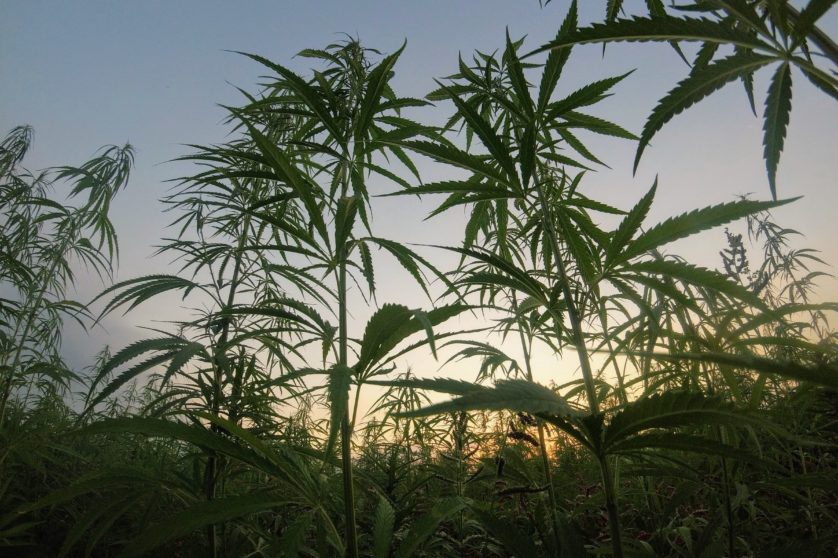The Evolution Of Sativa Cannabis Strains — From Origin To Nowadays
The Sativa cannabis strain has a long and colorful history that stretches back hundreds of years. Learn more about this powerful plant, from the first strains discovered to modern-day applications and powerful hybrid breeds.
Author:Alex MercerReviewer:Nathanial BlackwoodMar 17, 20231 Shares486 Views

The History and Evolution of Sativa Cannabis Strains
Sativa cannabis strains have a rich history and an exciting evolution. For centuries, these plants have been cultivated and bred to produce various cultivars with distinct characteristics. Here, we will explore the origins of Sativa cultivation, the differences between Indica and Sativa, and the evolution of Sativa varieties over time.
Introduction to Cannabis Sativa Seeds
Sativa cannabis strains are known for their tall stature plants, with narrow leaves and loosely branching flowers, long flowering periods, and uplifting effects. These types of plants tend to grow quite large with thin serrated leaves that appear light green in color due to their low chlorophyll content. The flavor profile is often described as sweet or fruity, while their aroma can range from pungent skunk-like smells to earthy tones.
Sativas have an energizing effect when smoked or ingested, often providing stimulating feelings of creativity and euphoria that can be helpful for treating symptoms such as chronic pain or depression. These properties all come together to create a unique experience that makes Sativa weed seeds https://askgrowers.com/seeds/sativaappealing to many cannabis consumers.
Exploring the Origins of Sativa Cultivation
The origin of Sativa cannabis is believed to stem from Eastern Asia, where it was used as early as the 3rd century BC. This type of plant was initially used in traditional medicine and religious ceremonies before being discovered by Westerners in the 1500s when European explorers first encountered its effects. Since then, it has become popular throughout much of the world for both recreational and medicinal use due to its energizing properties.
Differentiating Between Indica and Sativa
Although there is often confusion surrounding Indica and Sativa plants, there are some critical differences between them. For instance, Indica tends to be shorter, with broader leaves that appear darker in color due to higher chlorophyll content. In comparison, Sativas usually grow quite tall with narrow leaves that appear light green in color due to their lower chlorophyll levels.
Besides size and THC content differences between Indica and Sativa marijuana seeds, another critical factor that distinguishes them is their effects on the user’s mental state when consumed. Indica strains tend to produce a relaxing body high with couch-locking effects while Sativas provide a more uplifting high that leads to enhanced creativity and feelings of euphoria without causing drowsiness or sedation. This makes them ideal for those looking for an invigorating experience when using cannabis products but who don’t want to be too overwhelmed or sedated by its effects.
Breeding and Genetics: How Sativa Varieties Have Evolved Over Time
Since its inception centuries ago, breeding techniques have played a large role in determining how different varieties look and smell today. Cultivators have continued experimenting with ways to improve upon existing Sativas since they were first introduced centuries ago in Europe. By experimenting with different methods, such as crossbreeding or backcrossing techniques, through selective breeding techniques, breeders have been able to develop new cultivars that boast unique characteristics such as higher THC levels or enhanced flavor profiles compared to original landrace varieties. This process has allowed us to enjoy some of our favorite strains, such as Sour Diesel or Blue Dream, which likely wouldn’t exist without careful experimentation from dedicated breeders throughout the years!
Modern Cultivars and Genetic Manipulation: What’s New in the World of Sativa?
Over time, growers have developed increasingly sophisticated cultivation techniques for producing high-quality canabis Sativa seeds products. With advancements in genetic engineering, master growers now have unprecedented control over specific traits like terpene profiles, cannabinoid content, and trichome development that can be used to craft specialized cultivars with unique flavors and effects. For example, "chemovar" breeding programs have allowed for tailoring certain varieties for specific medical conditions, such as pain relief or anxiety reduction. Some dispensaries even offer a wide range of exotic hybrid combinations that blend different Sativas together with other hybrids such as Indicas varieties - all designed with specific medicinal benefits in mind.
Going Global: How Sativa Strains Became an International Phenomenon
Sativas have come a long way since they were first cultivated in Eastern Asia centuries ago. As traders began transporting these strains to different parts of the world, they began to develop their own distinct characteristics as they adapted to new climates and regions. By the late 19th century, cultivation had spread around the world, and Sativa was being grown as far away as Mexico, Jamaica, Thailand, Colombia, and other countries. However, it wasn't until much later that Sativa genetics made their way to North America and Europe. Here they flourished in California’s warm Mediterranean climate as well as in Holland’s temperate conditions. By the 1970s, Sativas had become a hugely popular strain across both continents, with wide different varieties being developed by growers.
As marijuana legalization gained momentum over time, so too did the popularity of Sativa strains. By 2017, over 60% of cannabis consumers reported using Sativas on a regular basis—-making it one of the most popular varieties on the planet.
Growing Trends With Sativas: What Does The Future Hold For This Popular Strain?
As legalization continues to sweep across more states in America (and across other countries around the world), it's clear that Sativas will remain a critical part of many people’s daily lives for years to come. And while there will always be those who prefer Indicas or hybrids when it comes to medicating or recreational use—-there's no denying that Sativas will continue to drive innovation within cannabis culture worldwide due to their higher levels of energy-boosting cannabinoids such as THCV (tetrahydrocannabivarin).
It's also likely that as technology advances further, we may see even more refined genetic manipulation techniques used in order to produce personalized cultivars specifically suited for individual needs—-allowing for even greater therapeutic potential than what is currently possible today with existing plant varieties. So, if you are a cannabis enthusiast, you can buy Sativa seeds and start your cultivation journey!
Conclusion
Sativas have come a long way since they were first discovered centuries ago! From Southeast Asia, where they were first used medicinally, until now, where they are enjoyed recreationally around the world—-we can clearly see how far this plant has come thanks in part to advances made in breeding technologies throughout the years, allowing us access to new cultivars each year!
This article was provided to you by Denys Svirepchuk, an AskGrowers expert. Denys is an experienced authority in the cannabis industry. His areas of expertise include cannabis strain reviews, terpenes and compounds, and responsible use. He is passionate about his work and strives to provide accurate and valuable information to the cannabis community.
Jump to
The History and Evolution of Sativa Cannabis Strains
Introduction to Cannabis Sativa Seeds
Exploring the Origins of Sativa Cultivation
Differentiating Between Indica and Sativa
Breeding and Genetics: How Sativa Varieties Have Evolved Over Time
Modern Cultivars and Genetic Manipulation: What’s New in the World of Sativa?
Going Global: How Sativa Strains Became an International Phenomenon
Growing Trends With Sativas: What Does The Future Hold For This Popular Strain?
Conclusion

Alex Mercer
Author
Alex Mercer is a seasoned author and analyst specializing in wealth research, with a keen focus on evaluating the net worth of individuals across various industries. With over a decade of experience in financial analysis and wealth assessment, Alex has developed a nuanced understanding of the factors that contribute to an individual's financial status, from investments and assets to market trends and economic policies. His work involves in-depth reviews and analyses, providing insightful observations on wealth accumulation, management strategies, and the socio-economic implications of wealth distribution.
Throughout his career, Alex has become known for his ability to distill complex financial data into understandable and engaging narratives, making the subject of wealth and net worth accessible to a broad audience. His expertise is not just in numbers but in telling the stories behind them, highlighting the journeys, strategies, and decisions that lead to financial success or challenges. Alex's contributions to the field of wealth research are valuable resources for anyone looking to understand the dynamics of wealth in today's world, offering a unique perspective that bridges the gap between financial analysis and human interest.

Nathanial Blackwood
Reviewer
Nathanial (Nate) Blackwood is a distinguished financial journalist with a decade of experience in net worth analysis. He holds an Economics degree from the University of Finance and a Data Analysis certification, enabling him to blend thorough insights with engaging storytelling. Nate is known for making complex financial information accessible to a wide audience, earning acclaim for his precise and reader-friendly analyses. Beyond his writing, Nate is dedicated to financial literacy, actively participating in educational forums and workshops.
He is the founder of PureNetWealth, a platform that demystifies the financial achievements of public figures by exploring the strategies and decisions behind their fortunes. Nate's work bridges the gap between intricate economic concepts and the general public, inspiring a deeper understanding of wealth dynamics. Follow Nathanial Blackwood for essential insights into the financial narratives shaping our world.
Latest Articles
Popular Articles